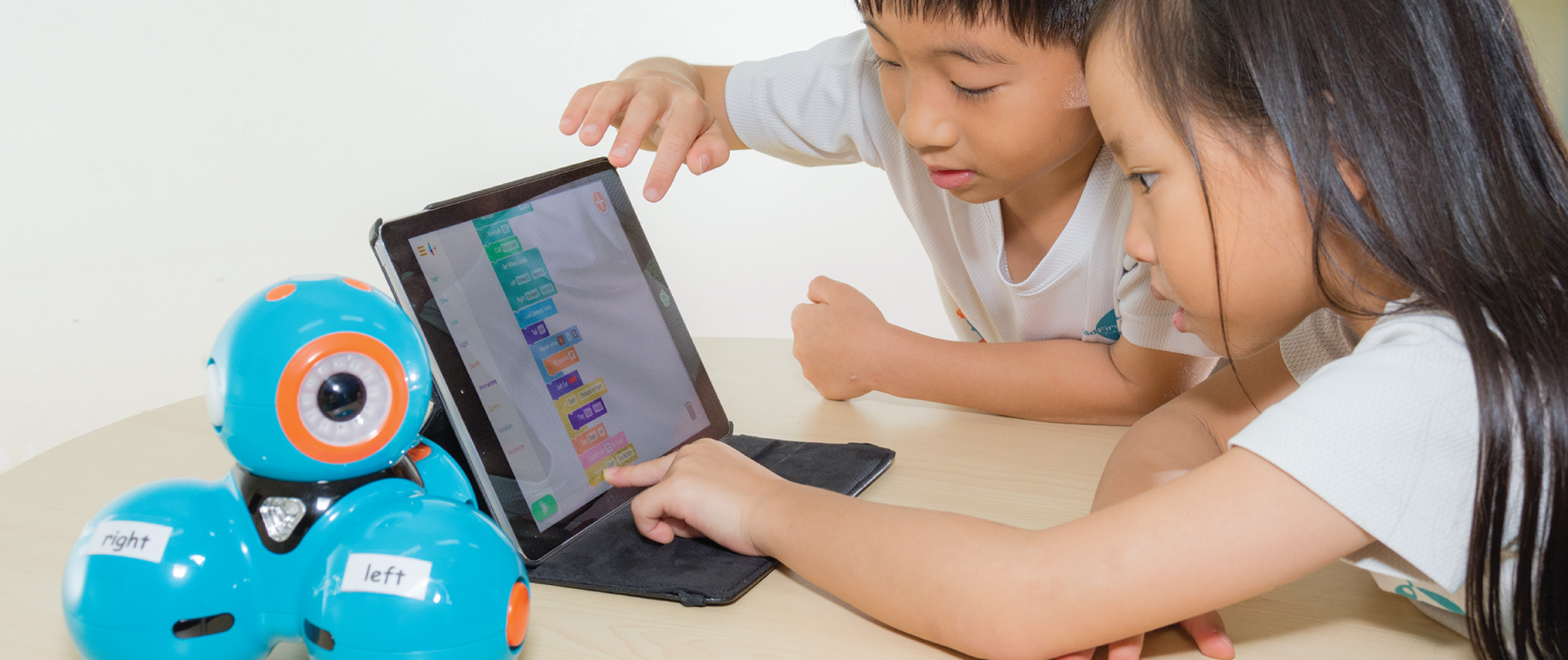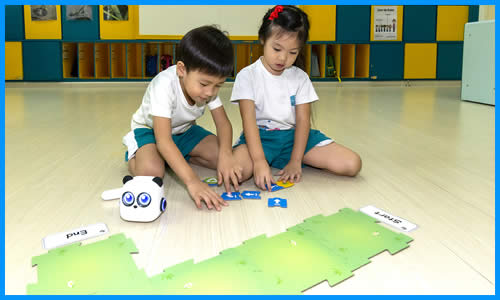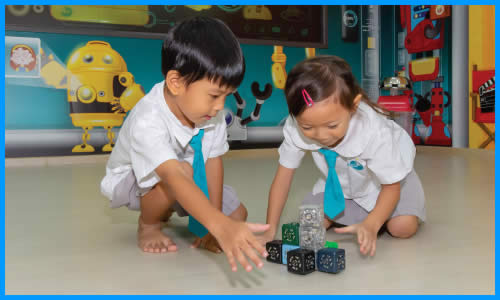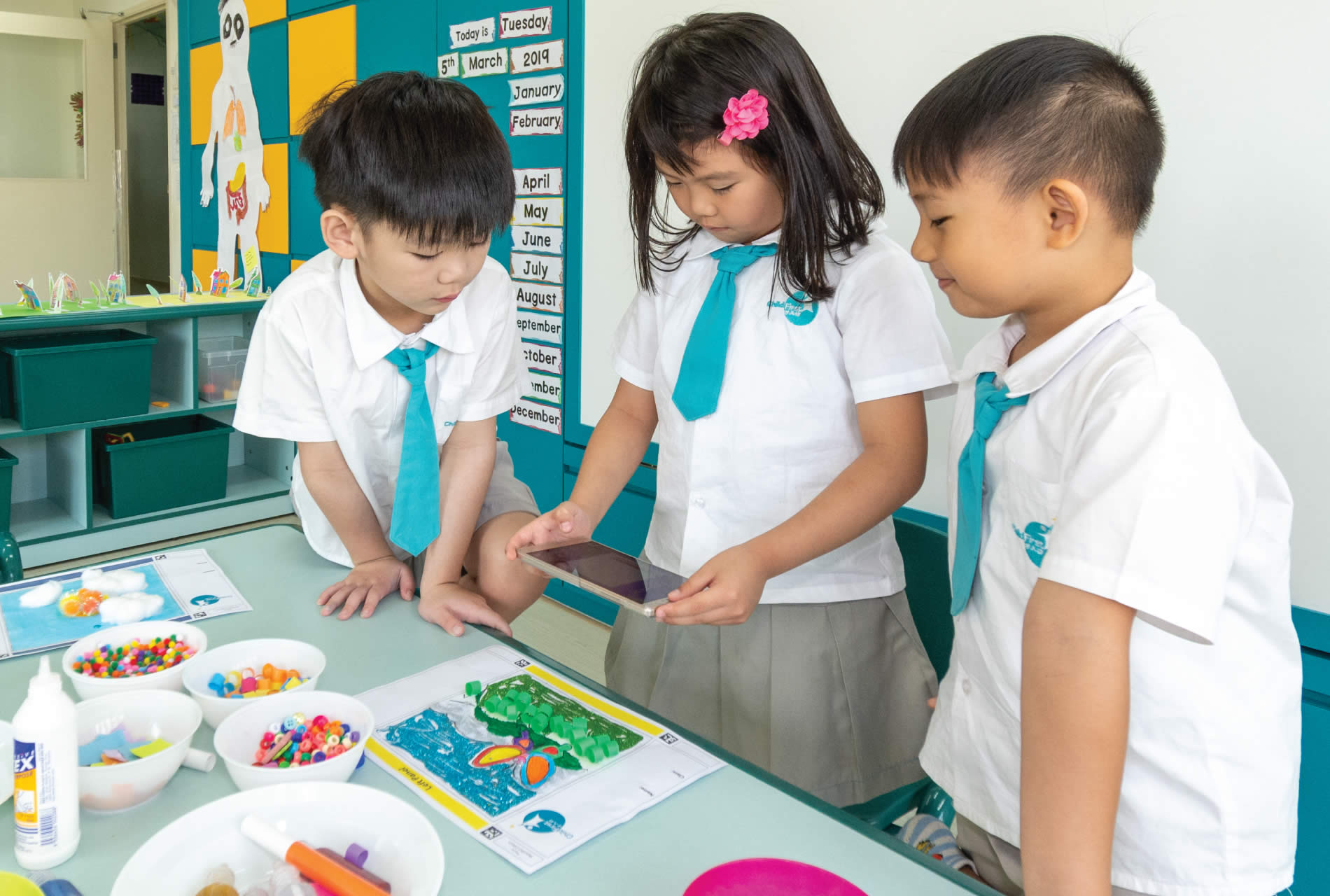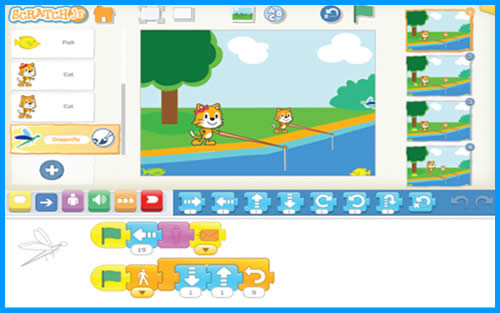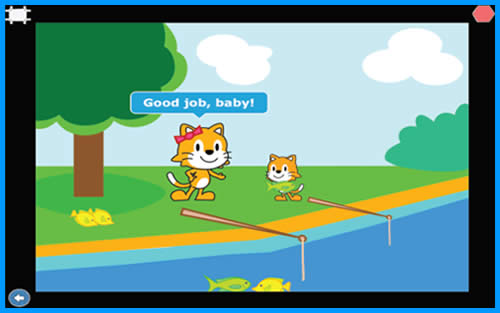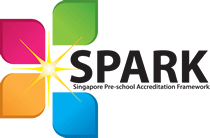CODING CURRICULUM
The rise of AI and robots will make coding an indispensable skill to ensure that your child can master AI instead of being replaced by robots. Like learning any language, it is much easier starting young. That is why ChildFirst is the first trilingual pre-school to integrate coding inside our curriculum.
18 MONTHS – 3 YEARS OLD
At this stage, your child will start to be introduced to the fundamentals of coding by building up pre-coding skills and being exposed to the vocabulary needed for coding through fun, physical play. These include sequencing skills, making simple patterns, understanding simple instructions and directions.
Your child will start to learn coding the age-appropriate way (unplugged) starting from N2. This will be done without the use of a screen (no tablet or computer). You may be surprised that coding can be learnt without the use of a screen. In fact, the essence of coding is logical thinking by breaking down a problem into a sequence of steps. Your child will first learn to sequence steps (instructions) by physically moving his/her body so that he/she can internalise the understanding of moves such as move forward, turn right, and move backward. Subsequently, they learn to programme a robot which uses a tap pen controller to read directional programming cards.
Kindergarten 1
Starting in K1, your child will learn to code using a tablet to control a more sophisticated robot. Besides applying the basic coding concepts he/she has learnt up to N2, your child will learn to control the robot’s distance, speed, angle, sound, and light. He/she will then apply these skills to solve problems such as navigating the robot through an obstacle course.
Your child will then progress to programme and customise the actions and movements of a humanoid robot. Through this process, your child will learn about estimation, decomposition (breaking a problem into smaller parts), and algorithm (a set of steps to solve a problem). More importantly, your child will be exposed to computational thinking which can be applied in a variety of situations, regardless of how technology changes.
Programme Sessions
| Monday to Friday | FULL DAY | HALF DAY, MORNING | HALF DAY, AFTERNOON |
|---|---|---|---|
| Mountbatten (PN & N1) | 8:00am to 5:00pm | 8:00am to 11:00am | 2:00pm to 5:00pm |
| Mountbatten (N2, K1 & K2) | 8:00am to 5:00pm | 8:00am to 11:30am | 1:30pm to 5:00pm |
| King Albert Park (PN & N1) | 8:30am to 5:30pm | 8:00am to 11:30am | 2:30pm to 5:30pm |
| King Albert Park (N2, K1 & K2) | 8:30am to 5:30pm | 8:30am to 12:00pm | 2:00pm to 5:30pm |
| Tampines (PN & N1) | 8:00am to 5:00pm | 8:00am to 11:00am | 2:00pm to 5:00pm |
| Tampines (N2, K1 & K2) | 8:00am to 5:00pm | 8:00am to 11:30am | 1:30pm to 5:00pm |

